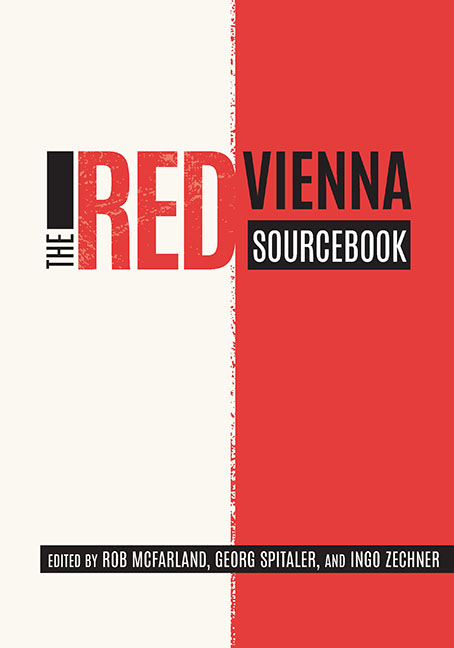Book contents
- Frontmatter
- Contents
- Acknowledgments
- Permissions and Credits
- A Note on the Structure of This Book
- Introduction
- Part I Foundations
- Part II Philosophies
- Part III Identities
- Part IV New Values
- Part V Social Engineering
- Part VI Vitality
- Part VII Housing
- Part VIII Cultural Politics
- Part IX Mass Media
- Part X Exchange
- Part XI Reaction
- Part XII Power
- Chronology
- References
- Contributors
- Index of Subjects
- Index of Persons
Chapter 32 - Black Vienna
Published online by Cambridge University Press: 23 October 2020
- Frontmatter
- Contents
- Acknowledgments
- Permissions and Credits
- A Note on the Structure of This Book
- Introduction
- Part I Foundations
- Part II Philosophies
- Part III Identities
- Part IV New Values
- Part V Social Engineering
- Part VI Vitality
- Part VII Housing
- Part VIII Cultural Politics
- Part IX Mass Media
- Part X Exchange
- Part XI Reaction
- Part XII Power
- Chronology
- References
- Contributors
- Index of Subjects
- Index of Persons
Summary
THE SIMPLIFIED COLOR CODING of Vienna's political parties is far more complex than it appears at first glance. While it is clear how “red” came to be associated with the Social Democratic Workers’ Party (Sozialdemokratische Arbeiterpartei, SDAP) and other parties on the left, the designation of the opposition as “black” is much more complex. Nevertheless, with the rise of modern political parties in the final decades of the monarchy, Black Vienna came to be associated with mayor Karl Lueger and the founders of the Christian Social Party (Christlichsoziale Partei, CS). The CS under Lueger—as well as his two successors Josef Neumayer and Richard Weiskirchner—was a successful mass movement of the city's lower and middle classes. It positioned itself against the SDAP, as well as against the intellectual elites and the liberal upper class that had dominated the Imperial Council until that time. Catholic social teaching served as a foundation, as did programmatic anti-Semitism. The latter served to link the CS with the pan-German movement, though it was still distant from the movement due to its allegiance to the monarchy. With the introduction of universal male suffrage in the Imperial Council election of 1907 and 1911, the CS and the SDAP became the dominant factions in the Parliament of the monarchy. This made it necessary for the conservatives to expand their base to the lower clergy of the countryside and to the peasants, while the Social Democrats’ orientation toward the working class remained unchanged. The CS continued to expand its base into rural areas after World War I, particularly after the first municipal election in Vienna when universal suffrage was introduced, and when the mayoral office went to the Social Democrat Jakob Reumann. The subsequent strategy of the Christian Social chancellor (1922 to 1924, 1926 to 1929) and prelate Ignaz Seipel was to unite all anti-Marxist forces. In 1922, he formed a coalition at the federal level with the Pan-German People’s Party and the Rural League (Landbund), and in 1927 he was running in the national election with the so-called Unity List (Einheitsliste). Along with the CS, the “black” camp now included the Pan-Germans, the right-wing paramilitary organizations of the Heimwehr, and the bureaucratic elites of the monarchy.
- Type
- Chapter
- Information
- The Red Vienna Sourcebook , pp. 627 - 648Publisher: Boydell & BrewerPrint publication year: 2019



